April 2nd, 2013 §
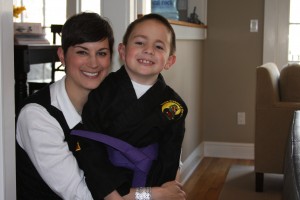 It’s been a wonderful but long few days. I was so run down yesterday that after our egg hunt I got into bed and pretty much didn’t get out for 9 hours. Tristan’s birthday was absolutely delightful. We held a birthday party, something he’s never had before. We’re not big on parties in our family; instead, we always have small family celebrations.
It’s been a wonderful but long few days. I was so run down yesterday that after our egg hunt I got into bed and pretty much didn’t get out for 9 hours. Tristan’s birthday was absolutely delightful. We held a birthday party, something he’s never had before. We’re not big on parties in our family; instead, we always have small family celebrations.
One year, Tristan was at Shriners Hospital for Children on his birthday having hand reconstruction surgery. When the surgeon you want has an opening in his schedule, you don’t say no because it’s your four year-old’s birthday.
When we’ve done parties it’s been my tradition to have a no-presents party. Our children get presents from us and close friends. Party guests, however, are not allowed to bring them (it’s fascinating to me how many people have a difficult time following this rule). Instead, they’re asked to bring the money they would have spent on a gift and donate it to charity (we designate Shriners Hospital for Children). Each party we’ve had in the past has raised at least $500. Paige has had two or three parties through the years, Colin has had two. In those particular years they got the party, cake, and presents from family members. This was more than enough.
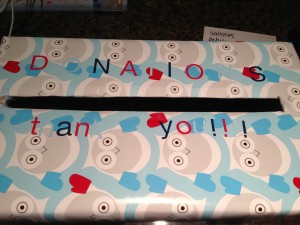 We put a donation box out at the party and everyone can stuff the box. This year Paige wrapped and decorated the shoebox. The children who are bringing the donations also get a lesson in the joy of giving to others. Often the parents tell me that their children don’t understand why they can’t bring a present. That’s okay with me, I think it’s fine to force a discussion about giving to those in need. My children take pride in doing something good, and even when they are young and want to know why guests can’t bring gifts, I feel no guilt in explaining that not all children can afford to pay for the operations they need. When parents say to me, “Oh, I would love to do that but I don’t know how my child would respond,” I never quite understand that. It’s our jobs as parents to be role models, to show our children what’s important.
We put a donation box out at the party and everyone can stuff the box. This year Paige wrapped and decorated the shoebox. The children who are bringing the donations also get a lesson in the joy of giving to others. Often the parents tell me that their children don’t understand why they can’t bring a present. That’s okay with me, I think it’s fine to force a discussion about giving to those in need. My children take pride in doing something good, and even when they are young and want to know why guests can’t bring gifts, I feel no guilt in explaining that not all children can afford to pay for the operations they need. When parents say to me, “Oh, I would love to do that but I don’t know how my child would respond,” I never quite understand that. It’s our jobs as parents to be role models, to show our children what’s important.
When I had my own 40th birthday party a few years ago I did the same thing I have my children do: I asked guests to bring donations to charity in place of a gift. We must be willing to do ourselves what we ask of our children.
Shriners Hospitals provides care regardless of financial situation with an emphasis on orthopaedic care, spinal cord injuries, and burns. Tristan’s complex hand reconstruction helped him tremendously, he was able to have 3 procedures at the same time (a tendon transfer, a z-plasty to widen the web space, and a ligament tightening at the base of his thumb). Should he need cervical fusion surgery for the hemivertebrae and malformations in his neck that is where we will go (I’ve written elsewhere about Tristan’s congenital deformities in his spine and left hand). The team in Philadelphia including Dr. Randal Betz, Dr. Scott Kozin and physician’s assistant extraordinaire Janet Cerrone are very special to us.
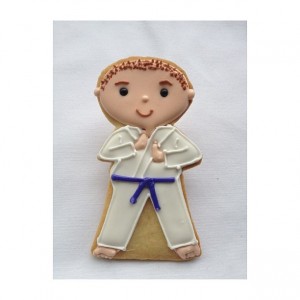 Invitations and stickers from Easton Place Designs and the most adorable cookies from One Tough Cookie helped to make the day special. Tristan loved his karate party, and I love that I’ll be sending a big envelope to Shriners Hospital in Philadelphia from Tristan. I am so grateful to the families who helped to make this birthday so special for Tristan. I thank them on behalf of the children who will benefit from their generosity. Everyone does what’s right for them. This type of birthday celebration is what feels right to me.
Invitations and stickers from Easton Place Designs and the most adorable cookies from One Tough Cookie helped to make the day special. Tristan loved his karate party, and I love that I’ll be sending a big envelope to Shriners Hospital in Philadelphia from Tristan. I am so grateful to the families who helped to make this birthday so special for Tristan. I thank them on behalf of the children who will benefit from their generosity. Everyone does what’s right for them. This type of birthday celebration is what feels right to me.
…………………………………………………….
In case you missed it, Seth Mnookin had a great piece on Slate about the Time magazine cover about cancer. He and I had a great talk about this and I’m quoted briefly in the piece. You can read it here.
** Also, a reminder I’ll be on Doctor Radio (SiriusXM channel 81) this Wednesday, April 3rd at 1 PM EST on the Oncology Show. You can check the schedule here, and it does repeat a few times during the week. I am going to try to get an audio file for those of you interested in listening who won’t have access to it live. The topic? One of the most popular here on the blog: how to talk to people with cancer in a sensitive and caring way.
October 9th, 2011 §
Last Wednesday we took Tristan to Shriners Hospital for his checkup with his spine and hand team. He goes every 6 months for monitoring, in particular to make sure the tilt of his head has not increased. His spinal deformity consists of hemivertebrae (vertebrae that are only partially formed) and vertebral fusions (ones that are stuck together). This combination results in his case in something known as a disorganized spine.
As an infant his head was quite crooked on his neck.
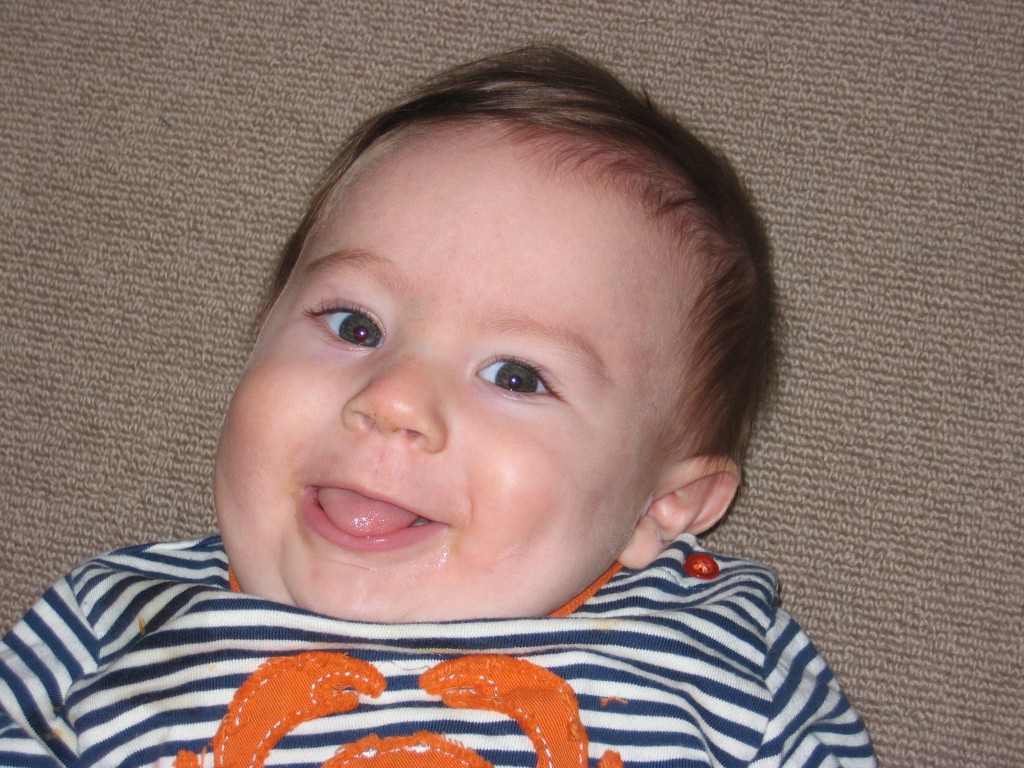
During the ensuing months, the tilt measured 25-30 degrees. The severity of the situation increased and Dr. Randal Betz told us if the curve progressed we would have to intervene with surgery to fuse the vertebrae in a straight position. His neck growth would be halted; while his body would mature his neck size would be that of a toddler. He would have no mobility in the neck after the surgery. We prepared ourselves for hearing the news.
We continued to monitor his growth. As he began to sit, and then walk we watched as the neck grew. His two hemivertebrae were growing in such a way that they were balancing each other as he grew. Had the pizza slice-shaped wedges been wide on the same side, surgery would have been inevitable. Because they were on opposite sides, this “z-curve” worked to his advantage. By the time he was a toddler his head was straighter.
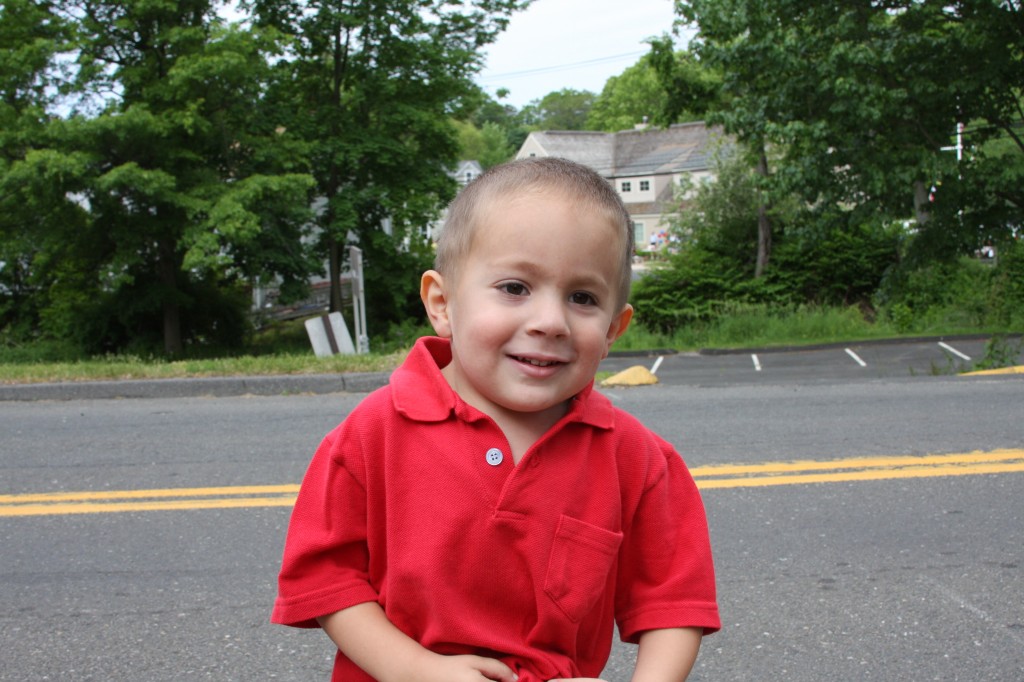
Though his neck is short, and always will be, it has continued to grow. Physical therapy since birth has kept his muscles stretched and strong. Weakness on one side of his body is imperceptible.
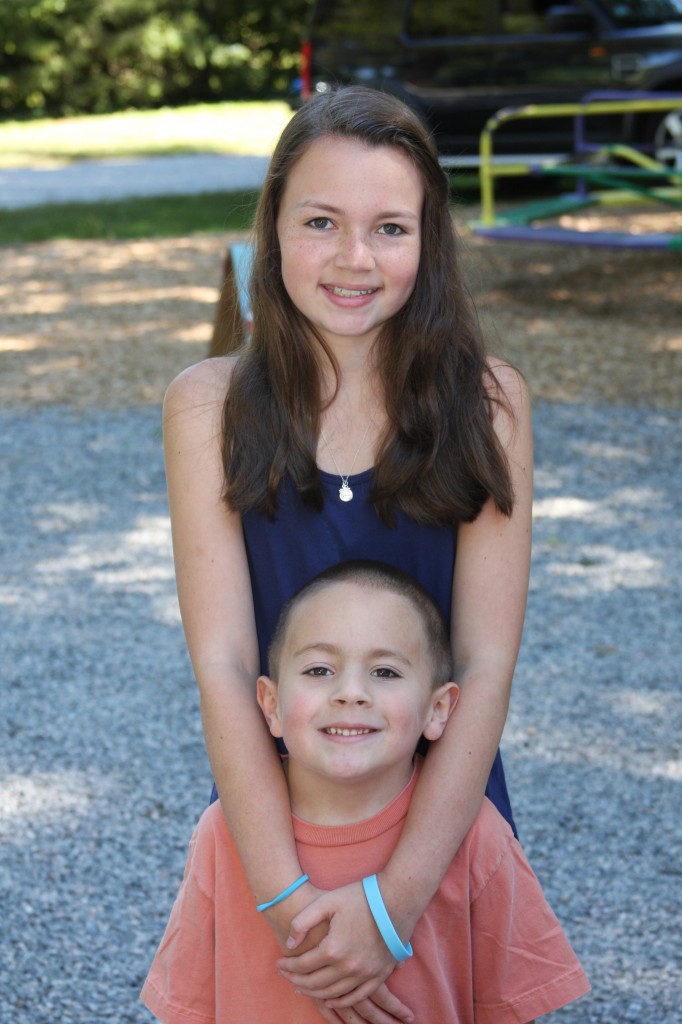
This week his x-rays showed that the tilt once at 25-30 degrees is now less than 8 degrees. His eye sockets and lower jaw are almost even. The three points he has mobility in his neck are stable and should be sufficient to prevent extraordinary wear. He’s doing as well as he possibly can be, given his anatomical issues.
We next had Tristan’s appointment with his hand surgeon. He, too, was pleased with the results of Tristan’s three-pronged surgery last March (you can read about Tristan’s hand deformities here including his lack of a flexor pollicus longus muscle on his left side which makes his thumb unable to bend ). A flexor digitorum superficialis tendon transfer, ulnar collateral ligament reconstruction at the base of the thumb, and a 4 flap z-plasty of the thumb index web space were all successful. The large scar on his wrist is fading and it’s hard to believe it looked like this.
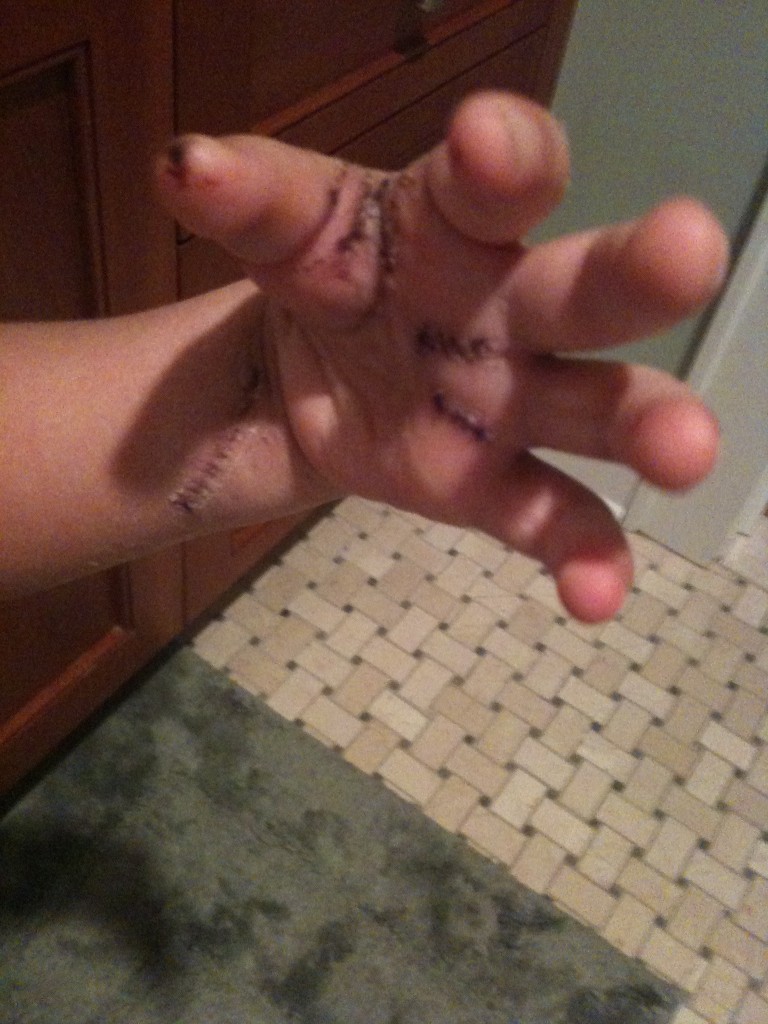
Here he was this week showing that hand with his upper extremity surgeon, Dr. Scott Kozin.
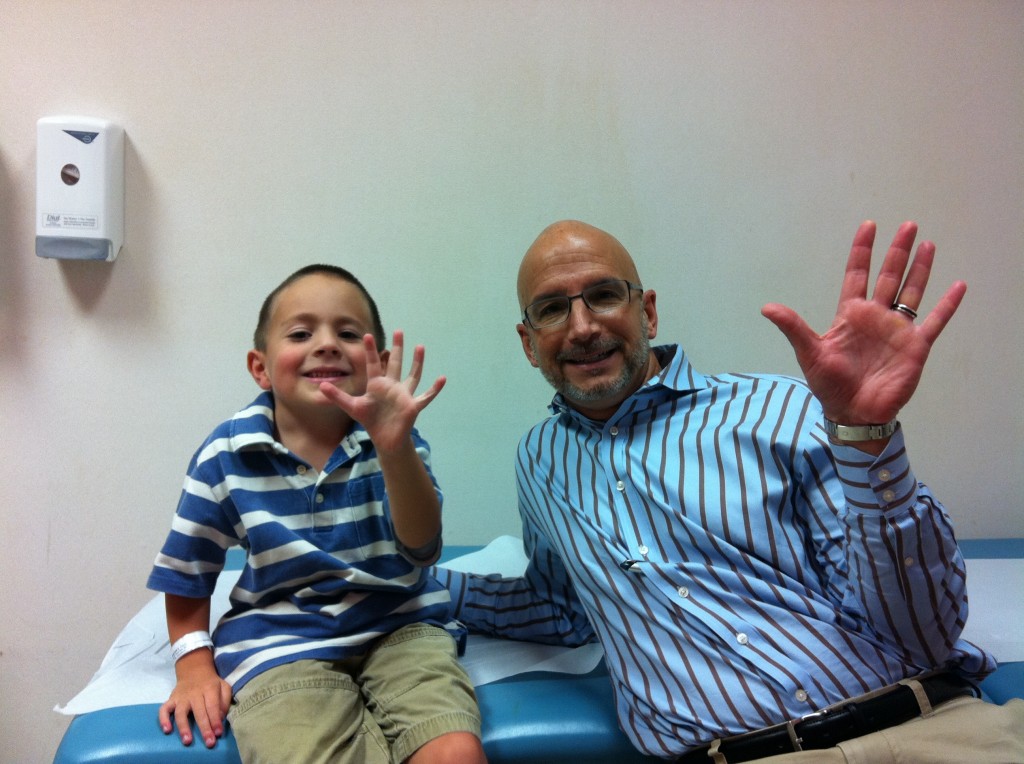
His left thumb will never bend, and the hand will be weaker because of it. He is a lefty, so it does affect his fine motor skills. But we continue to do hand therapy with him and it’s made a world of difference. Each Monday and Tuesday this 5 year-old is doing his therapy sessions at 6:30 A.M. before he heads off to kindergarten. That smile is always on his face. He never complains. He got a great report and we left Shriners happy and exhaling for another six months. We saw many friends there and it’s always like a family reunion. We’ve been through a lot together and we are grateful for their continued support and care.
I do want to mention one thing we learned at this visit. Shriners specializes in orthopaedic and spinal cord injuries; when children have traumatic spinal injuries, this is where they go. Tristan’s spinal surgeon told us there are two activities that they recommend children avoid because the risk of spinal injury is so great (this is for all children, even who do not have any defects): trampolining and riding four wheelers (ATVs). Those two activities have such a rate of injury that the surgeon does not allow his own children to participate in them. I share that information because it was new to me; we do not own either piece of equipment because Tristan is not allowed to do either but we were not aware that those activities were so dangerous to all children.
December 20th, 2010 §
Originally posted March 11, 2010 on www.lisabonchekadams.com
In the wee hours of the morning yesterday I gently nudged Tristan from his deep slumber. At 5:15 we were in the car, headed out for the 2.5 hour drive to Philadelphia’s Shriners Hospital to see his hand surgeon.
These trips are always big ones to me. In the first two years of Tristan’s life we focused on his neck problems. With most of his cervical vertebrae only half-formed or fused together, we knew that we’d be told at these visits whether the curvature in his neck had worsened. At one point we were right on the border of intervention. He’d reached the maximum degree tilt of his head; if it went any more, he’d have needed surgery to insert rods and fuse his vertebrae together to straighten the neck permanently. It would have been big.
To us.
But whenever we go to Shriners we see other kids with orthopedic issues. Some are very serious. The most serious. Because the hospital specializes in pediatric orthopedic problems it is a magnet for complicated cases.
It is always humbling to walk into Shriners. Literally to walk in. Many, many children are wheeled into the hospital, unable to walk. A little baby lay in her car seat without any visible problem. But I knew that her sheep-covered blanket hid an abnormality that had brought anxious parents here.
Tristan had his pre-op appointment. He loves his surgeon; Dr. Kozin has an amazing bedside manner and got right into a great chat with Tristan when my son boldly announced as the doctor walked in, “I burped! And then I shivered!” Gee, I was so proud.
We got all of the details about Tristan’s tendon transfer surgery at the end of the month. Because we didn’t need to see his spinal team or get any x-rays, we were able to be back on the road by 10:15 to come home.
Before we left I stopped at the soda machine. I let Tristan put the money in and press the Diet Coke button. A little boy approached and his father hovered behind, watching him.
“What’s wrong with your son?” he said in that way that people who wait in waiting rooms together say.
“He’s got problems in his neck and thumbs.”
The father announced, “Our son has 7 fingers.”
I looked down, expecting to see 7 fingers on one hand. Instead, he had a perfectly-formed left hand, but his right hand was crab-like, with a thumb and a pinkie, but nothing in between but a wide expanse. “He can do everything with it,” the father said, gesturing at the hand.
He was beaming. Beaming. He was so proud of his son, about 3 years old. And he should have been. While some people might have been sad, or ashamed, this father delighted in his son’s accomplishments and accommodations to his physical abnormality.
Children are so resilient: I say it all the time. My son has taught me so much, made me more observant, more aware of life in so many ways. I am thrilled that the most horrific diagnoses and prognoses we were told about his mental development did not come true. His problems are only physical.
Last night, my Twitter friend Kathleen said that a pediatrician had told her, “Kids think about the things they can do, not what they can’t.” I loved that. It’s true. When kids realize the things they can’t do, their concern is only to find a new way to do that same thing.
I love the folks at Shriners Hospitals. They do amazing work in their network of hospitals for orthopedic, spinal cord, and burn injuries on children. They do not take any money from patients for any services they provide. If they accept your case (judged only on the specific problem your child has, and whether they are uniquely suited to help fix the problem, not on economic status) you will never pay a cent for services. I can’t ever resist giving a plug for them because we appreciate their care so much.
We were lost and scared and seeking information when we found out about Tristan’s problems. We’d never heard of spinal fusion surgery and had no clue what we might be in for. To have a surgeon say, “I know what the problem is. I have seen other children with this. If it needs to be fixed I know how to fix it.” Well, those are the words you hang on to as a parent.
In the car on the drive home it hit me how tired I was. I nodded off while Clarke drove and heard Tristan saying, “I want to go back to see Dr. Kozin.”
That’s music to my ears. His ability to be in and out of hospitals, doctors’ offices, and deal well with anesthesia will all help him in his life. With a heart surgeon as a father, and surgeries myself that started at age 5, I’ve never known a time I haven’t been comfortable in hospitals. When I got cancer it served me well.
I wish Tristan hadn’t had these problems, but he does. This is his life. The more comfort I can instill in him about medical care, the better. I think it’s a wonderful life skill to have.
So we have a few weeks until the hand surgery… and then Tristan will get his wish and get to see his surgeon again. We’ll see how he feels about him afterwards…
(to read the next few chapters in Tristan’s hand surgery story please click here)
………………………………………………………………………………..
Original comments appear below
March 11, 2010
7 comments
Stonecutter099
I do a regular search for items on Twitter related to Shriners and by doing so came across your post about “Walking in, Walking Out”.
Thanks for posting this on your blog. I am a Shriner in Edmonton, Alberta, Canada. Posting stuff like this helps to keep Shriners active – knowing that there’s actual people out there with names, instead of being fed stats that the hospitals helped X amount of children last year and spent X amount of dollars. If they actually get to see the progress that you’ve documented, it means much more.
Hope you don’t mind – I’m now one of your twitter followers.
Thursday, March 11, 2010 – 03:17 PM
Sarah
Tristan is an amazingly strong boy. It obviously runs in the family!
Thursday, March 11, 2010 – 04:06 PM
cay0730
I love these posts about your family. As a childless 40ish person, I love this inner view on the parent-child relationship, and the bond of love that’s beyond anything I can imagine. While the decision was right for me, I honor and admire people who go to the ends of the earth to guide their children through every step of life–good and not-so-good.
Thursday, March 11, 2010 – 06:29 PM
mrswhich
I wish that Tristan and my son could be friends – he sounds like an amazing person. No need to wonder why.
Thursday, March 11, 2010 – 09:59 PM
Delia
Touching, thoughtful post! Wonderfully written!
Thursday, March 11, 2010 – 10:37 PM
Theresa
Your post so hit the mark on so many levels. You and I know that children are far stronger than us because we have seen them face problems that most adults can’t handle with such grace and dignity. I always try to remind people of that. When Catherine was diagnosed, I wondered how the doctors could do their jobs with a smile on their faces everyday. It didn’t take me too long to realize that their patients were an inspiration and they drew from that strength. I’m sure everyone at Shriners feels the same way.
Friday, March 12, 2010 – 08:11 AM
KCM
I second Sarah’s comment
Friday, March 12, 2010 – 01:14 PM
October 15th, 2010 §
Part one: Tristan’s Valentine
My son Tristan is about to turn 4. I haven’t written about him much here. I started thinking about why that is, given that his life has given us more twists and turns than either of our other children. I think it’s precisely because he’s had his share of hardships that I have felt overprotective of him. But it really needn’t be that way.
Tristan’s physical problems are a bit unusual. For those of you who don’t know him, he had open heart surgery at seven months old to move an artery that was compressing his trachea, preventing him from breathing properly since the time he was born. He required feeding therapy to learn to eat after having trouble combining eating and breathing until that point.
He also had problems with his neck. From birth his head sat at an awkward angle. Doctors thought it was muscular torticollis that could be fixed with physical therapy. We did a DOC band to correct the flattened head he had as a result of this “fixed” neck position. But after a while my intuition told me it wasn’t muscular. I felt it was orthopedic, something that would be an extremely rare abnormality. I took him to an orthopedic surgeon who confirmed our fear: Tristan’s problems were more serious than just a tightened muscle.
We were told various diagnoses for his problems when he was about six months old– everything from cerebral palsy to Goldenhar Syndrome. But in the end, when pressed for a diagnosis they jokingly say he has “Tristan Adams Syndrome,” a combination of rare defects in his spine and hands.
The cervical vertebrae in his neck are not formed correctly. Half-formed, or fused together, the vertebrae near the base of his brain are mangled, appearing on x-rays, CT scans, and MRIs almost indistinguishable from one another. His adorable exterior hides a jigsaw puzzle-like appearance on the inside.
While the abnormal vertebrae caused him a severe head tilt to one side as an infant, it now appears from the outside as almost straight. As he’s grown his “z-curve” (two striking jogs in his neck which have thus far balanced eachother out; either one alone would have required surgical intervention already) has improved with growth.
We watch, we test, we monitor. If the congenital scoliosis (meaning a curvature of the spine since birth) worsens, he’ll need surgery to fuse his neck in a fixed state with rods and screws. His neck would not grow any more, and he’d have no mobility in it. Imagine having your neck in a position where it’s extremely short and you can’t turn it at all unless your whole upper body goes with it forever. So far, we’ve escaped this. But we are told that every growth spurt brings risk.
His other oddity are his hands. For the first year of his life we knew something was wrong, but no one could figure out what. He held his hands oddly. His thumbs just looked wrong– more like big toes. And finally, a hand surgeon was able to tell us: he has hypoplastic (underdeveloped) thumbs. He’s missing the muscle at the base of the thumb where the base of the thumb joins the wrist. I had never heard of that before. Likely, you haven’t either. That’s why no one could pick up on it. What does this mean? Functionally, it means his left thumb can’t bend at all. Try to pick something up holding your thumb out straight. Or hold a pencil, write your name. His right thumb bends slightly, but not “normally.” Oh, and yes, of course… he’s a lefty.
He doesn’t like to do things with his hands. He won’t write or draw. He can hold a spoon and fork, but prefers to eat with his hands.
Tristan’s surgeon says around now is a good time to do surgery to help get a bit more function in his left hand. By taking a tendon from another finger on his left hand and transplanting it to Tristan’s thumb, they hope to give him better mobility. It won’t allow him to bend his thumb. There isn’t a surgery that can do this: the muscle and tendon you use for this run all the way up to your elbow (who knew?!).
As I type this I know, looking at my thumbs while I type, that computers will be his saving grace. My thumbs stay straight when I type, and I am sure that he will learn quickly how to type and use a keyboard. He copies Paige and tries to play the piano. I think he might be able to do that too.
I remind myself about the documentaries I’ve seen over the years about people with different disabilities and how they’ve compensated. The YouTube video of the mom without arms who could change a diaper with her feet was one of the most amazing.
I know Tristan’s amazing spirit, his infectious giggle, his sweet and expressive face, his stubborn tenacity will get him through. I know he falls behind on every fine-motor skill evaluation. I know he won’t be able to play many sports well because of his hands or participate in lots of sports or fun activities because of the risk of neck injury.
When he brought home his valentines from school yesterday, his friend Bennett had written his name beautifully on the red paper. Tristan can’t write a letter. He knows them all, but he can’t write them.
My eyes teared up, jealous at the inscription.
I know he’s not going to do that anytime soon.
But I also know that somehow he will.
Someday he will.
And when he does,
that valentine with his name and mine
will go into my special box of keepsakes.
For always.
Shortly after that post, on his 4th birthday, Tristan had his tendon-transfer surgery.
…………………………………………………
Part two: It’s My Birthday and All I Got Was This Lousy Cast
My son Tristan had surgery yesterday. With no food starting at 8 PM the night before, and no drinking after 7 AM the morning of, Tristan was wheeled back to surgery at 3 in the afternoon. He asked only once for something to eat and drink. All day he played with Matchbox cars in his hospital bed waiting. Never a tear, never a complaint. A few times he gently asked, “Can we go home now?”
Surgery finished at 6 and was a success. Our fantastic and caring surgeon at Shriners Hospital, Dr. Scott Kozin, decided in the operating room after seeing the tendon in his ring finger that it wasn’t sufficient; he closed up that finger and used the middle finger instead. The tendon was transferred, the ligament stabilizing his thumb was tightened, the web space between his thumb and pointer deepened. All went well and a large cast was placed on his arm from fingers to shoulder.
Rather than a typical heavy fiberglass cast he received a more modern version of immobilization. To avoid having to “saw” the cast off in 3 weeks, this one will unwrap. For this reason, the pediatric patients are not as scared when the casts come off. These are not usable in every situation, but it was nice that he could benefit. Unfortunately, the worst part will be that there is a pin in his hand stabilizing his thumb right now. That will be pulled out when the cast comes off. I predict that removal is not going to go over too well.
When he woke up, Tristan’s first concerns were for water and his cars. Within an hour of awakening his personality re-emerged. As he started drinking and eating his spark returned. By 9:15 PM we were on the road, anxious to get him home. By midnight he was tucked in bed with a dose of pain meds and his stuffed animals.
The orange striped handmade pillowcase with dog pulltoys on it was a gift from the hospital as well as a cute quilted blanket with trucks on it. Every child gets a set of these handmade comforts.
A nurse found out it was his 4th birthday yesterday and rounded up some toys for him… cars and a book that makes fire engine sounds. He had a stash of toys to carry home from the hospital.
It wasn’t a great way to spend a birthday, but in the long run, it was a good sacrifice. There’s still some leftover cake for him to eat later today. The best present of all was having him come through surgery well and be able to come home with us without even having to spend the night. While there, we saw so many children with orthopedic injuries/issues that would keep them at Shriners for weeks or even months.
About 2 hours after the above picture was taken, Tristan looked like this:
That smile is the best present he could have given me.
……………………………………..
Part three: Have a Nice Day
Tristan recovered well from the surgery. I won’t show the picture of what his hand looked like when they removed the cast and there were black track marks of sutures all across his hand and wrist. The human body is amazing, healing itself after having so many things done to one tiny hand. Now, seven months later, all of the incisions in his hand are almost invisible, the only obvious one remaining is the long diagonal one on his left wrist where one end of the new tendon was attached. It’s still rather red but I know in time it will fade.
When the stitches came out Tristan needed extensive physical therapy to accomplish three tasks: stretch out the new web space, keep scar tissue from forming and tightening up the area, and get his brain used to communicating with the tendon in its new location.
A few months ago we encouraged him to hold a pen again, a paintbrush, any implement. If there’s one thing Tristan has always refused to do it’s written expression of any kind. The coordination and finger strength it takes to hold anything in his hand and make it do something deliberate is not an easy or enjoyable task for him.
About six weeks ago he started writing more. By “more” I mean completing a word without stopping. He had never colored a picture or fingerpainted. But through trial and error we patiently have worked with him to try a variety of options for writing. This week his therapist and I tried a dry-erase white board again. We’ve found that just because something doesn’t work once doesn’t mean it won’t work at a later date.
The combination of the marker making a smoother stroke (rather than the shaky, wavy lines he usually makes with pens, pencils, or crayons) and the smooth writing surface “clicked.”
The therapist was here at 6:45 a.m. on Tuesday morning for Tristan’s appointment. I took Colin to the bus and when I got back home and opened the door to the kitchen here is what I saw:
Now, to be fair, he did use his orange marker to trace the letters over the top of ones written in yellow by the therapist. It was a struggle, and took a lot of work. He still can’t write letters on his own without tracing. But it was a victory. It was a step. No mom could have been happier or prouder than I was. It might take him a little bit longer but he’ll get there.
And I will be there to hug him after every little step, the way I did when I saw this.
Tristan’s wish came true: I had a nice day.
In fact, I had a great day.
 It’s been a wonderful but long few days. I was so run down yesterday that after our egg hunt I got into bed and pretty much didn’t get out for 9 hours. Tristan’s birthday was absolutely delightful. We held a birthday party, something he’s never had before. We’re not big on parties in our family; instead, we always have small family celebrations.
It’s been a wonderful but long few days. I was so run down yesterday that after our egg hunt I got into bed and pretty much didn’t get out for 9 hours. Tristan’s birthday was absolutely delightful. We held a birthday party, something he’s never had before. We’re not big on parties in our family; instead, we always have small family celebrations. We put a donation box out at the party and everyone can stuff the box. This year Paige wrapped and decorated the shoebox. The children who are bringing the donations also get a lesson in the joy of giving to others. Often the parents tell me that their children don’t understand why they can’t bring a present. That’s okay with me, I think it’s fine to force a discussion about giving to those in need. My children take pride in doing something good, and even when they are young and want to know why guests can’t bring gifts, I feel no guilt in explaining that not all children can afford to pay for the operations they need. When parents say to me, “Oh, I would love to do that but I don’t know how my child would respond,” I never quite understand that. It’s our jobs as parents to be role models, to show our children what’s important.
We put a donation box out at the party and everyone can stuff the box. This year Paige wrapped and decorated the shoebox. The children who are bringing the donations also get a lesson in the joy of giving to others. Often the parents tell me that their children don’t understand why they can’t bring a present. That’s okay with me, I think it’s fine to force a discussion about giving to those in need. My children take pride in doing something good, and even when they are young and want to know why guests can’t bring gifts, I feel no guilt in explaining that not all children can afford to pay for the operations they need. When parents say to me, “Oh, I would love to do that but I don’t know how my child would respond,” I never quite understand that. It’s our jobs as parents to be role models, to show our children what’s important. Invitations and stickers from Easton Place Designs and the most adorable cookies from One Tough Cookie helped to make the day special. Tristan loved his karate party, and I love that I’ll be sending a big envelope to Shriners Hospital in Philadelphia from Tristan. I am so grateful to the families who helped to make this birthday so special for Tristan. I thank them on behalf of the children who will benefit from their generosity. Everyone does what’s right for them. This type of birthday celebration is what feels right to me.
Invitations and stickers from Easton Place Designs and the most adorable cookies from One Tough Cookie helped to make the day special. Tristan loved his karate party, and I love that I’ll be sending a big envelope to Shriners Hospital in Philadelphia from Tristan. I am so grateful to the families who helped to make this birthday so special for Tristan. I thank them on behalf of the children who will benefit from their generosity. Everyone does what’s right for them. This type of birthday celebration is what feels right to me.






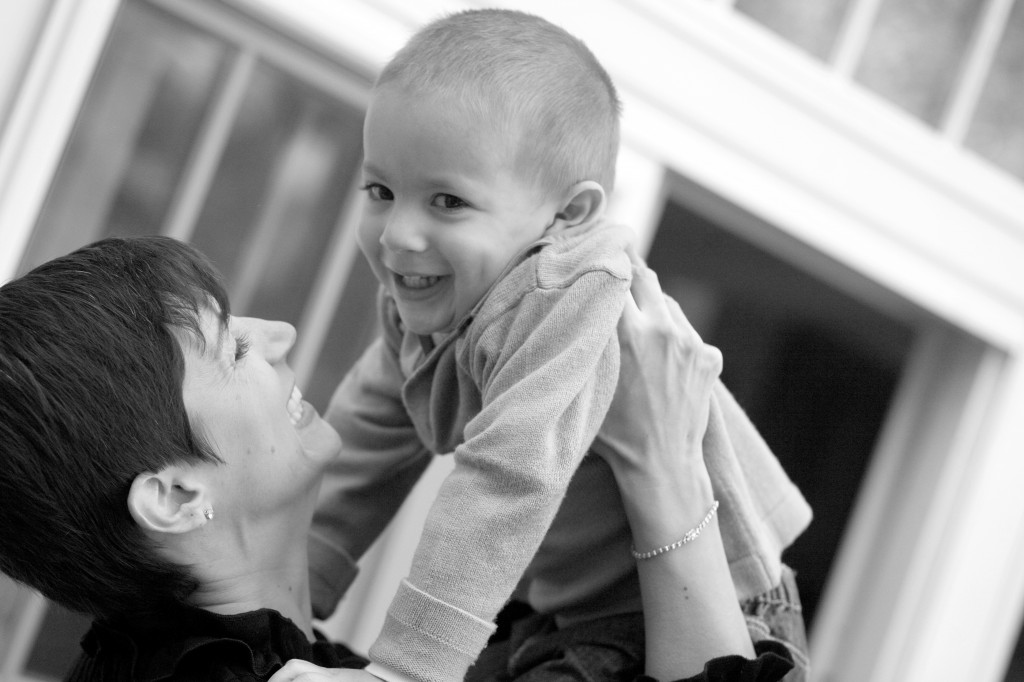
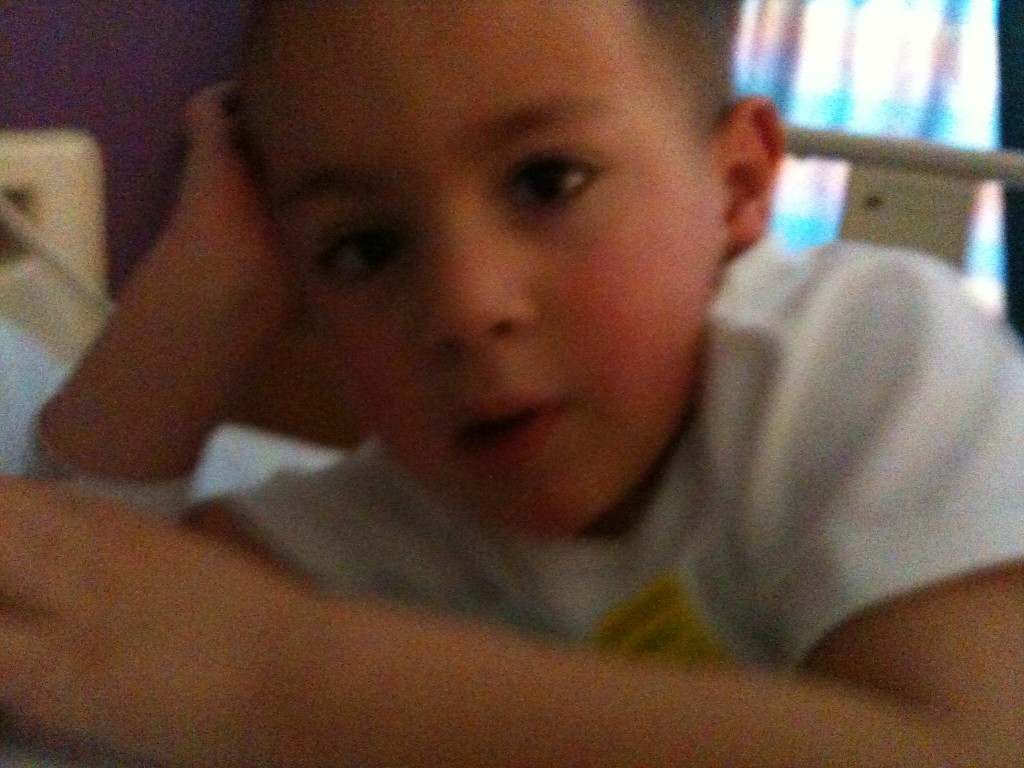
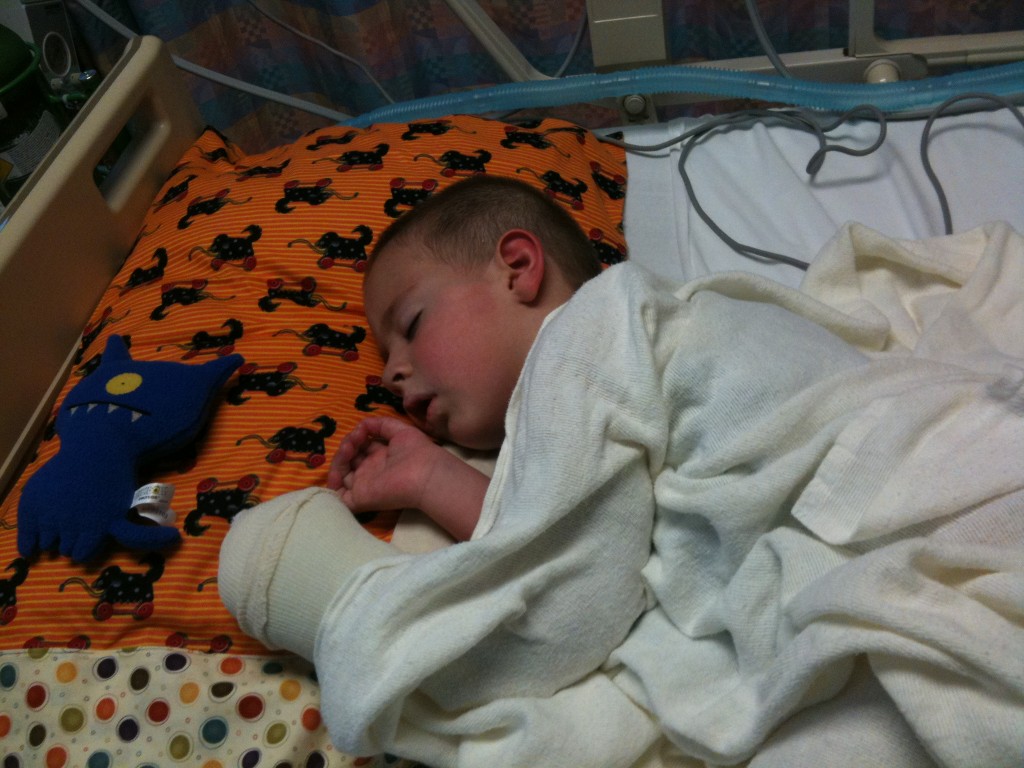

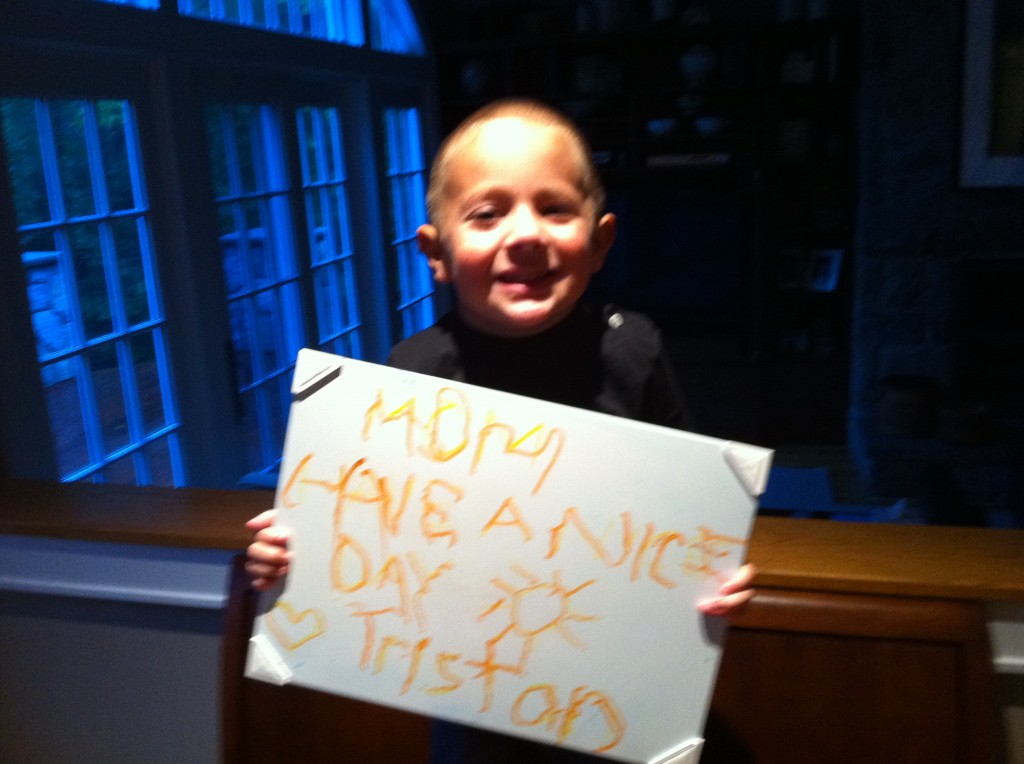
 Link to Twitter
Link to Twitter